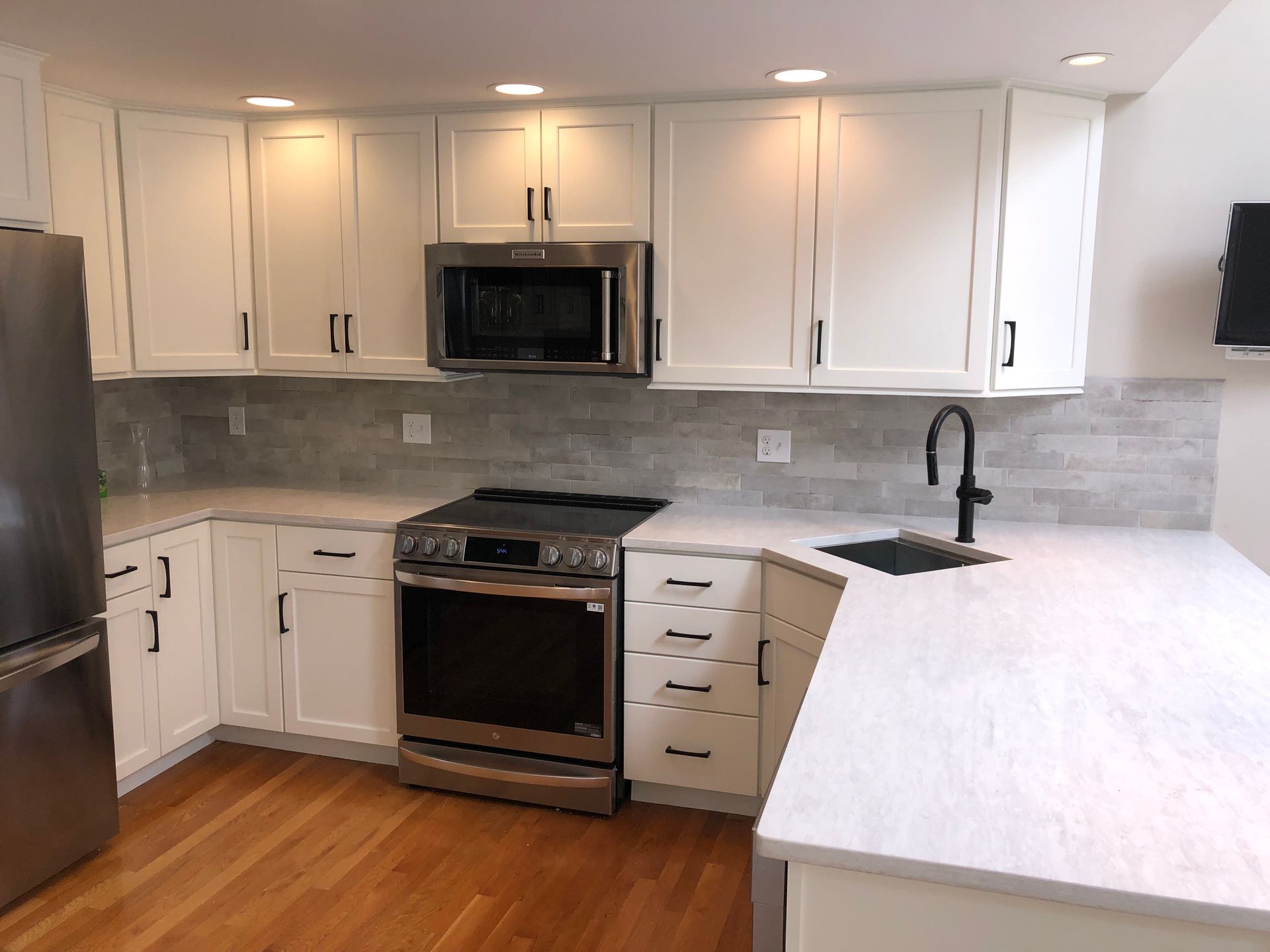Why is catalyzed conversion varnish the best finish for new factory-painted doors?
At Atlantic Cabinet Refacing I use only Catalyzed Conversion Varnish. This is considered the Gold Standard of cabinet finishes.
Factory-painted doors arrive with a solid base, but what you apply next determines their longevity and resilience. A catalyzed conversion varnish is the top-tier choice for this final step, offering unmatched durability and a high-end look that surpasses other finishes like lacquer or polyurethane.
Durability and resilience: A chemical advantage
Unlike traditional paints and varnishes that simply dry, a catalyzed conversion varnish cures through a chemical reaction. The two-part mixture, which includes a varnish resin and an acid catalyst, creates an extremely hard, cross-linked molecular film. This process offers several key advantages over other finishes.
Feature
Catalyzed Conversion Varnish
Other Finishes (e.g., Lacquer, Polyurethane)
Durability
Creates the hardest, most durable finish on the market.
Generally less durable and more susceptible to damage.
Scratch
Resistance
Forms a tough, resilient surface that resists scratches and dings.
Softer and more prone to scratching, especially in high-traffic areas
Chemical
Resistance
Stands up to water, cleaning chemicals, and other household liquids.
Can be compromised by chemicals, with some finishes lifting or softening over time.
Flexibility
Remains elastic, allowing the finish to expand and contract with the natural movement of the wood without cracking.
Can become brittle and crack at joints as the wood ages.
Yellowing
Many formulas are "water white," meaning they have superior color retention and will not yellow over time, making them ideal for white doors.
Oil-based versions, especially polyurethane, tend to yellow with age or UV exposure.
